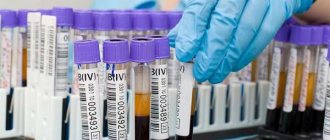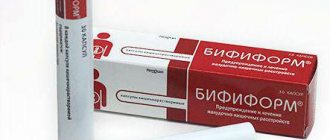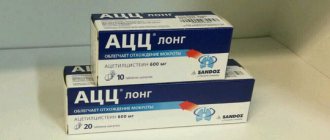Prothrombin time is a formal level that indicates the speed and quality of blood clotting and how active the special factors-substances responsible for this process are. In particular, prothrombin is studied. But not only.
Disorders of the type described pose a critical danger to health and life. Because when the reading is high, the blood becomes too thin. Even a minor injury can be fatal.
If the level is below the conventional norm, blood clots form. When moving, these clots can block blood vessels, causing a stroke, heart attack, or death of the patient.
Conclusion - you need to check regularly. At least see a therapist and get timely treatment if necessary.
Why is the analysis carried out?
There are quite a few indications for research, since the concentration of a specific protein is a universal way to assess the hematopoietic system. Quality and speed of clotting.
Reasons for diagnosis:
Long-term use of antiplatelet or anticoagulant drugs
These drugs affect the amount of factor substances that regulate the rheological state of the blood (its fluidity).
Especially strong drugs, be it Warfarin or others, require systematic health checks. At a minimum, they take a blood test. And every week or a little less often. Depends on the dosage and condition of the patient himself.
Antiplatelet agents: Aspirin, Ticlopidine, Clopidogrel and others also require constant monitoring. In the absence of this, fatal bleeding is possible. Even from a minor injury.
Study of treatment effectiveness
Here we are talking again about the drugs mentioned above. Normally, with regular use of anticoagulant drugs and other drugs, the prothrombin index drops. That is, the blood clots faster, everything returns to normal. Therefore, doctors repeat the study every week less often.
The same applies to the moment when treatment is canceled. The patient is checked regularly for about a month or two. Just in case. Especially if there are problems with the hematopoietic system and the synthesis of coagulation factors.
Planning a pregnancy
Naturally or through IVF. Why study prothrombin time in this case?
During gestation, there is a high probability of disruption of the rheological properties of blood. Both thickening and excessive fluidity are possible. In order not to encounter dangerous manifestations, the patient is checked.
This is one of the routine activities as part of pregnancy planning.
Liver disorders
The largest gland in the body acts as a kind of biochemical laboratory. Several coagulation factors are synthesized here. Including prothrombin itself.
Consequently, any disruption of the organ’s functioning immediately affects the state of the blood. How exactly depends on the body’s reaction.
Usually there are fewer clotting factors. For example, against the background of cirrhosis, acute liver necrosis.
Vascular diseases
Varicose veins, atherosclerosis, past and current pathologies such as aneurysms, congenital anomalies. In this case, the speed and quality of trophism (nutrition) of tissues depends on the fluidity of blood. Nervous, muscular and others.
Therefore, prothrombin is checked depending on the situation. To eliminate possible complications. Therapy is prescribed if necessary. This is necessary for the prevention of strokes and heart attacks.
Overt vitamin K deficiency or pre-existing condition
Although prothrombin is produced in the liver, coagulation is impossible without normal concentrations of the vitamin. To put it simply, it “packages” prothrombin and allows the compound to take on a complete form.
In the absence of a sufficient amount of the substance, incomplete prothrombin is produced. The analysis allows us to assess the degree of violation. Its heaviness. Think over a treatment plan.
Thrombosis
As part of diagnosis and identification of a possible cause (read more about thrombosis). As a rule, laboratory results are not considered in isolation.
The list of indications is incomplete.
Based on the results, you can detect a group of conditions:
- Increased prothrombin time. It is not considered a disease in itself, but indicates possible disorders of the liver, excretory system, etc.
- Reduction of PV. Most often it speaks in favor of pathologies of the digestive tract, excessive synthesis of factors, including prothrombin itself.
The analysis is carried out using routine methods. It is enough to take a sample of venous or capillary blood and automatically check it.
Despite its simplicity and accessibility, this is an informative technique. It is suitable for making a primary diagnosis and for verifying a previously established one.
Why does prothrombin time decrease?
The following deviations lead to an increase in the rate of blood clotting:
- pregnancy 3rd trimester,
- hormonal contraceptives (COCs and OKs),
- DIC syndrome,
- blood clotting drugs,
- intravascular changes.
- anticoagulant therapy;
- damage to the walls of blood vessels;
- large areas of burn damage;
- significant blood loss during or after surgery;
- polycythemia;
- lipid metabolism disorders in obesity, atherosclerosis;
- excess vitamin K.
If a person takes anticoagulants or inhibitors (heparin, warfarin, aspirin), a single test for prothrombin time is not considered objective, so tests for prothrombin index and APTT, as well as INR, are simultaneously prescribed.
Factors of external influence that distort the result of the analysis
The prothrombin time test may become unreliable not only because the person was taking anticoagulants, but also due to poor nutrition, taking medications, and dietary supplements.
What prolongs the clotting process
- products - alcoholic drinks, excessively fatty foods, beans, soybeans, green vegetables;
- medicines - from the groups of antibiotics, anabolic steroids, heparins;
- high dose aspirin, diuretics, reserpine, laxatives and other drugs.
Reduces the time period for blood clotting
- foods with high concentrations of vitamin K;
- medications - Vikasol, vitamin C, antihistamines, corticosteroids, barbiturates, drugs with a high caffeine content, xanthines, contraceptives (oral), many others.
- In addition, the value of prothrombin time is affected by dehydration of the body, which appears as a result of excessive vomiting, diarrhea and other factors.
What influences the result of the analysis?
- alcohol, green tea, soybeans, beef and pork liver, green vegetables - spinach, various types of cabbage, lettuce, broccoli - reduce prothrombin time
- reduce prothrombin time - barbiturates, hormonal contraceptives, vitamin K, elevated body temperature, thyroid hormone drugs, allopurinol, anabolic steroids, androgens, antiarrhythmic drugs, some antibiotics, H2 receptor antagonists (used for peptic ulcers and gastritis), antidiabetic drugs
- treatment with Clexane, Pradaxa, Xarelto - prolongs prothrombin time
The importance of coagulogram studies in pregnant women
Analysis of blood clotting for prothrombin time allows you to prevent possible complications: thrombosis, thrombophilia, preeclampsia, and other pathologies.
In the normal course of pregnancy, blood is taken for such a study 3 times, and in the presence of chronic diseases and deviations from the norm, more often, since the formation of even small blood clots in the vessels of the placenta can cause fetal hypoxia, as well as bleeding and placental abruption.
PTT norms for a pregnant woman:
- in the 1st trimester from 9.8 to 13.4 seconds,
- in the 2nd trimester from 9.4 to 13.5 seconds,
- in the 3rd trimester from 9.7 to 12.8 seconds.
In non-pregnant women, from 12.6 to 15.3 seconds.
An increase in indicators means a danger of bleeding, as well as the formation of bruises due to hematomas. If PTT results are lower than normal, blood clots may form.
Special Instructions for Testing
Mandatory multiple studies of prothrombin time during pregnancy are carried out for women in the so-called risk group:
- mothers with a history of spontaneous abortions, frozen pregnancies,
- in the presence of diabetes mellitus,
- with heart disease and vascular pathologies,
- if there is a tendency to form blood clots,
- women with an increased risk of bleeding.
Threat of DIC syndrome
A great danger for expectant mothers is the development of hypercoagulation (increased blood clotting) at the beginning of pregnancy, and then hypocoagulation (decreased coagulation rate), the so-called DIC syndrome. The consequences of an imbalance in hemostasis are the threat of the development of the following pathologies:
- placenta previa and abruption,
- gestosis;
- threat of hemorrhagic shock;
- hypertension in women,
- development of embolism,
- danger of miscarriage,
- antenatal (intrauterine) fetal death.
If deviations from the norm are detected, the doctor prescribes therapy that corrects violations of certain parts of hemostasis in which pathological changes have occurred. You cannot take anticoagulants and heparin agents on your own.
Decreased prothrombin
If the prothrombin index is low, this may indicate excessive activity of the prothrombin protein. A decrease may be observed in pregnant women, those suffering from polycythemia (this is increased blood viscosity), and patients with venous thrombosis.
A decrease in the indicator may indicate the following diseases:
- Gastrointestinal diseases.
- Dysbacteriosis.
- Prothrombin deficiency.
- Hypovitaminosis.
- Oncological diseases.
- Allergic reaction.
Most often, a decrease in this indicator occurs due to diet and occurs among representatives of the stronger half of humanity. It is men who make the choice in favor of meat products, consuming few vegetables and fruits.
What to do if the prothrombin level is low?
Typically, specialists prescribe their patients the use of medications such as heparin and warfarin.
In conjunction with drug treatment, you need to monitor your diet. Here is a list of foods that are not recommended for consumption if prothrombin levels are low:
- Animal fats.
- Buckwheat porridge.
- Beets, red cabbage, red pepper.
- Bakery products.
- Pickling and smoking.
- Greenery.
- Legumes.
Failures in prothrombin levels can lead to bleeding. They can be prevented if you include the right foods in your diet as preventive measures:
- Fish and fish oil.
- Onion and garlic.
- Citrus fruits, especially lemon.
- Ginger root.
- Green tea and cocoa.
- Oatmeal.
- Cranberries, raspberries or figs.
Norm of prothrombin
The Quick test is the prothrombin ratio of the temporary activity of prothrombin protein to the control sample as a percentage.
It characterizes prothrombin formation, the first phase of plasma homeostasis, and evaluates coagulation factor II.
Below are tables where both indicators are the same for both men and women, but differ depending on the age of the patients.
| NORMAL PROTHROMBIN ACCORDING TO QUICK | ||||||
| AGE | 0-6 years | 7-12 | 13-18 | 19-25 | 26-40 | over 50 years old |
| % | 80-100 | 79-102 | 78-110 | 82-115 | 78-135 | 78-142 |
A simultaneous increase in prothrombin time and % of the Quick index indicates a decrease in the ability of blood to clot, and lower values indicate a tendency to thrombus formation.
General information
Prothrombin time is the basic indicator of a coagulogram, which evaluates the external cascades of blood coagulation. The analysis is carried out in several directions:
- prothrombin according to Quick,
- prothrombin index and time,
- INR.
Each of the indicators characterizes the period and quality of blood clotting when reagents are added to it (calcium ions and tissue thromboplastin). The results obtained make it possible to diagnose diseases of the hematopoietic organs, circulatory and cardiovascular systems.
There are several methods for assessing prothrombin time.
Prothrombin according to Quick
The relative indicator is calculated - the percentage of normal prothrombin time. To obtain data, dilutions of the patient's plasma are used, which makes the test more accurate. The test result varies depending on the prothrombin complex clotting factors that are produced in the liver.
INR (international normalized ratio)
It is measured as the ratio of the patient’s prothrombin time to a similar normal value. The result is also raised to the power of ISI (International Sensitivity Index). This indicator allows you to identify the degree of hypocoagulation (extension of clotting time) during conservative treatment with anticoagulants (warfarin, heparin, etc.).
Prothrombin time (seconds)
The duration of coagulation of the patient's plasma is studied when reagents are added to it (a mixture of calcium and thromboplastin preparations). Unfortunately, such a test does not provide a comparative assessment of the results obtained in different laboratories, and this significantly reduces its accuracy.
Prothrombin index
Represented by the ratio of normal plasma clotting time to the patient's clotting time. The result obtained is measured as a percentage. At low values, this test is not indicative, since it directly depends on the reagents of a particular laboratory.
Note: at present, experts do not recommend using the last two indicators to obtain accurate prothrombin test data.
Diet food
A prerequisite for the treatment of any deviation is the prescription of special diets.
Against blood clots
During treatment with anticoagulants, you should eat as little as possible (or completely exclude from the menu) foods that reduce prothrombin time:
- animal fats in the form of lard, butter, cream, fatty meat and offal (brains, kidneys, liver);
- buckwheat porridge;
- red cabbage, turnips, radishes, beets, red peppers;
- mango, red currant, viburnum, chokeberry, blueberry, blackberry, banana;
- vegetable green crops;
- legume vegetables;
- bakery white products;
- saltiness, smokedness.
- other types of food that contribute to the appearance of blood clots.
And, conversely, when treating with coagulants, it is necessary to increase the consumption of the listed products.
What to eat if you are at risk of bleeding
If the prothrombin time is reduced, products that thin the blood are recommended for use:
- fatty fish - herring, mackerel, halibut, catfish, and fish oil;
- garlic and onion; lemon and other citrus fruits;
- Jerusalem artichoke, ginger;
- olive and linseed oil;
- healthy cranberries, plums, raspberries, figs, blueberries,
- oatmeal, oatmeal
- green tea, cocoa.
To reduce the viscosity of plasma, you need a special regime of drinking ordinary water: small sips more often. Equally important is a balanced diet. Alcoholic drinks should be avoided during treatment.
When undergoing a test analysis for PTV, you must inform the laboratory technician about the preliminary intake of medications, and also do not drink or smoke, and exclude products that affect the test result.
How to prepare for research?
Prothrombin levels and its normal levels in the blood may vary depending on various factors. In order for the prothrombin test to give the most accurate results, it must be taken in compliance with certain rules, in particular:
Come to the clinic on an empty stomach (at least four hours must have passed since your last meal) Tell your doctor about taking any medications and, if you are taking medications that affect blood clotting, notify your doctor about this before issuing a referral for testing
When testing for prothrombin, the blood is placed in a special container filled with sodium citrate; After this, the substances are mixed and sent to a centrifuge, which allows the plasma to be separated from the blood cells. Then, when the process is completed, a tissue substance is placed in the container, on which the resulting solution is tested. You can get tested for antibodies to prothrombin in St. Petersburg at our MRI center and RIORIT clinic. You can make an appointment and find out the cost of the examination by phone..
When is it necessary to conduct tests?
Indications for prothrombin time analysis:
- identifying the causes of blood loss or the formation of hemorrhages, hematomas;
- checking the effectiveness of treatment with coagulants;
- detection of hemophilia and other diseases accompanied by non-stop bleeding from the nose or other organs;
- to detect vitamin K deficiency;
- liver function test;
- suspicion of disseminated vascular coagulation;
- during pregnancy to detect the threat of miscarriage;
- suspicion of thrombosis formation;
- before and after operations;
- the likelihood of homeostasis dysfunction;
- diagnosis of cardiovascular diseases;
- suspicion of infarction: myocardium, kidney, intestine, and also if the condition is pre-infarction;
- vein thrombosis;
- the likelihood of thromboembolism of an artery of the respiratory tract or other organs;
- for chronic anemia.
Indications for additional blood testing for INR and prothrombin time during pregnancy are the following factors: miscarriages prior to pregnancy, frozen fetus, excessively high uterine tone, symptoms of gestosis.
Prothrombin time analysis is prescribed:
- simultaneously with other tests that allow you to evaluate the process of blood clotting - APTT, D-dimer, INR, prothrombin index, fibrinogen
- in case of bleeding
- regular monitoring of the correctness of anticoagulant treatment
- with thrombosis of blood vessels of any organ - deep vein thrombosis, pulmonary embolism, myocardial infarction, kidney infarction, intestinal infarction
- for the diagnosis of congenital and acquired deficiency of blood coagulation factors - II, VII, IX and X
- long-term severe liver disease
- Diagnosis of DIC syndrome and monitoring of its treatment
Table of norms
In domestic practice, the prothrombin time method in seconds is used for research; the norms are presented in the table:
| Children | 14–18 sec. |
| Adults | 10–15 sec. |
However, it turns out that different laboratories use different reagents. Accordingly, they have their own reference values (range of norms).
This is seriously confusing: in one laboratory the standard PTT may be from 15 to 20 seconds, and in another 11-16 or 13-18 seconds.
In order to standardize the results, blood is assessed using the International Normalized Ratio (INR). This is the level you should be guided by.
| Age (years) | MHO indicator in units (coefficient) |
| 1-6 | 0.8-1.16 |
| 7-12 | 0.8-1.18 |
| 13-18 | 0.8-1.19 |
| 18-25 | 0.9-1.3 |
| 25-50 | 0.9-1.3 |
| Over 50 | 0.9-1.3 |
The norm of prothrombin time in women and men is the same and ranges from 0.8 to 1.3 units, there are no differences by gender. Unless the patient is in gestation.
During pregnancy
The indicator for pregnant women depends on the trimester.
| Trimester | INR norm |
| I | 0.8-1.3 |
| II | 0.8-1.1 |
| III | 0.8-1.3 |
When using blood thinners, levels can increase to 3 - 3.5 units in the international normalized ratio.
Laboratory measurement
Normal value
The normal prothrombin time is 11-16 seconds, for INR it is 0.85-1.35. Treatment with oral anticoagulants (warfarin) requires a higher target INR level, usually in the range of 2-3[1].
Methodology
When determining prothrombin time, blood plasma is most often used. The blood is drawn into a tube containing sodium citrate, which acts as an anticoagulant by binding calcium in the blood sample. The blood is gently mixed, then centrifuged to separate the blood cells from the plasma. In newborns, whole blood is used for analysis [2] The analysis is then performed automatically at a temperature of 37 C. Excess calcium is added to the plasma sample (thus neutralizing the effect of citrate), which restores the ability of the plasma to clot. For an accurate measurement, the proportion of blood and citrate in the tube must be fixed (usually a ratio of 9:1 is used). Many laboratories will refuse to perform a test if the tube is not completely filled with blood - and thus contains a relatively large volume of citrate. Next, tissue factor (also known as clotting factor III) is added to the calcium-containing plasma and the time until clot formation is measured, which is determined by optical measurement. Some laboratories use mechanical detection of the moment of clot formation, which allows more accurate determination of PTT in the case of a large number of fat droplets in the plasma and in cases of hyperbilirubinemia.
Reasons for the increase
If the prothrombin time is elevated, it means the blood is clotting too slowly. It's liquid. For example, you can carry out a standard calculation.
The level is calculated as the ratio of the indicator obtained from the patient to the standard average (this is 20 seconds). Let's say blood clots in 30 seconds. 30 / 20 = 1.5. With a normal index of 1.25 and even lower.
Liquid connective tissue takes longer to react than expected. There can be many reasons for this.
Liver pathologies
Organ dysfunction is accompanied by blood thinning. This occurs because this is where many clotting factors are synthesized. What diseases can provoke the disorder:
- Hepatitis. Or inflammation of the liver, usually of viral origin. Toxic, medicinal forms are possible. Those at particular risk are alcohol abusers and people who do not watch their diet.
It takes time for a permanent disorder to develop. Therefore, patients can fully count on positive prognoses.
- The second possible option is cirrhosis of the liver. Acute death of hepatocyte cells and their replacement with scar tissue. The organ is not able to work as it should. Hence the gradual decline in the synthesis of coagulation factors.
Treatment. Hepatoprotectors in large dosages plus diet. Cirrhosis in the early stages and in subcompensation requires an organ transplant. Transplantation at later stages is no longer possible. Since the blood becomes too liquid, death cannot be avoided during the operation.
Treatment with antiplatelet agents and anticoagulants
If the patient takes such drugs for a long time, problems with coagulation and an increase in PTT cannot be avoided. This is quite normal, since this is the main effect of these medications.
It makes sense to reduce the dosage if even the slightest injury or cut causes unstoppable bleeding.
Attention:
During therapy, you need to constantly monitor how prothrombin reacts and what the coagulation rate is. Every week, give or take.
Treatment. Drug dose control. If the individual reaction of the body manifests itself in excessive blood thinning, the course of therapy needs to be reconsidered.
It is possible to prescribe other medications. However, this should be done by a specialist. You cannot change medications without permission.
Vitamin K deficiency
A low concentration of the substance in the blood immediately affects the synthesis of prothrombin and an increase in blood clotting time. In general, at first glance, no changes are noticeable. However, the clotting factor is defective.
Vitamin K itself is not included in prothrombin. It works as a kind of catalyst. Accelerates normal synthesis, “packs” the substance. Gives it a finished, functionally active look. If there is a deficiency, prothrombin is not able to perform its tasks.
Treatment. Heavy doses of vitamin K. However, this is not enough. It is necessary to find the cause of the pathological process.
The nutritional factor is not always the leading one. Often the problem is the absorption of the substance in the digestive tract. Therapy is to correct the underlying factor.
Impaired synthesis of fibrinogen and other coagulation factors
Generalized problem. Such deviations develop for several reasons. This includes possible diseases of the liver, kidneys, and digestive tract.
Usually these conditions are not noticeable enough to motivate the patient to go to the hospital. At least in the early stages.
Therefore, prothrombin testing provides an invaluable service. Allows you to detect the disorder at the initial stages and treat the patient.
Therapy. Depends on the situation.
Hereditary pathologies
The classic disorder of this type is hemophilia. However, there are others. Associated with changes in the synthesis of other coagulation factors.
As a rule, such pathological processes are transmitted in a recessive manner. That is, in order for the disease to manifest itself in a patient, the damaged gene must be present in both the mother and father at the same time.
Such problems can be detected on the approaches. Even while planning pregnancy. If you get tested by a geneticist.
Treatment. Typically symptomatic. It is impossible to radically influence what is encoded at the core of the organism.
Hemostatic drugs are prescribed in medium or high dosages. Depending on how severe the disease is.
Also, such patients should behave with caution in everyday life. In order not to create unnecessary risks, do not provoke bleeding.
Blood transfusion
In this case, a temporary condition develops. Formally, it cannot be called a disease. The fact is that plasma and red blood cells are transfused. They are pure, meaning they do not contain clotting factors. This is necessary to prevent the substance from being rejected and coagulating too quickly.
The disorder lasts for several days. All this time, doctors carefully monitor the patient to avoid complications. Then everything returns to normal by itself when the liver begins to synthesize prothrombin.
Treatment. No therapy is needed as such. Doctors monitor vital signs. Including from the blood picture. If necessary, hemostatic drugs are used.
Next, the patient is transferred to inpatient treatment and discharged from the intensive care ward.
Hormonal imbalances
In particular, insufficient concentration of thyroid substances. Hyperthyroidism does not always provoke an increase in prothrombin time; only advanced forms are capable of this.
In some cases, the lack of estrogen in women and androgens in men affects it. Specific sex hormones. But here, as a rule, the background is completely disrupted.
Treatment consists of correcting the amount of substances.
- For diseases of the thyroid gland, a diet is indicated, iodine preparations are administered.
- If a tumor is to blame, it is removed after being examined in the laboratory.
- For recovery from pathologies of the adrenal glands, etc., replacement therapy is indicated.
Duration - until the disorder is permanently eliminated. The test is carried out, among other things, by laboratory methods. Monitor prothrombin time.
Endocrine diseases
First of all, it is diabetes mellitus. The process during which insulin synthesis is disrupted. Or tissue sensitivity decreases.
The disease is severe and is accompanied by dysfunction of all organs and systems. These include blood vessels, liver, and lipid metabolism. And through them, blood clotting is disrupted, and the healing time of wounds increases.
Treatment. Low glucose diet. Also systematic administration of insulin. According to need.
Malignant tumors
Any localization. They provoke a disorder, most often, at the final stages of development. The breakdown products of neoplasia poison the body and inhibit liver function. This is fraught with a disorder in the synthesis of coagulation factors.
The same should be said about metastatic cancer; it always provokes an increase in prothrombin time.
Treatment. Total tumor removal. If this fails, you need to eliminate as much of the affected area as possible. Chemotherapy and radiation therapy are then prescribed. As a second line technique.
Prothrombin, prothrombin index and time: blood standards, interpretation of tests
Have you been struggling with HYPERTENSION for many years without success?
Head of the Institute: “You will be amazed at how easy it is to cure hypertension by taking it every day...
Read more "
As a rule, upon admission to inpatient treatment, each patient the next morning before breakfast undergoes mandatory finger tests (complete blood count, sugar and prothrombin). These laboratory tests are considered the main indicative studies, since they are the ones who “paint” the overall picture of the patient’s condition. Other (biochemical, including coagulation) tests can be prescribed on the day of admission, if the problem in the patient’s body is clearly defined, or if, in the process of examination and treatment, the goal is to thoroughly study the functional abilities of the patient’s organs and systems and monitor the effectiveness of therapy .
The unique medium moving through blood vessels is classified according to its characteristics as connective tissue. Being in a liquid state and possessing fluidity, which prevents the adhesion of formed elements, blood, at the same time, is able to quickly clot when the vascular wall is damaged. She has this opportunity thanks to the blood coagulation system and its factor, one of which is prothrombin. It should be noted that all factors without violating the integrity of the vascular walls are in an inactive state. Activation of factors and the formation of blood clots inside the circulatory system without any reason threatens with serious complications for the body.
What is prothrombin?
Prothrombin or factor II (FII) of the prothrombin complex is a protein (glycoprotein), a plasma factor of the coagulation system, which belongs to alpha2-globulins and is synthesized by hepatocytes (liver cells).
It is important to note that the production of prothrombin will become noticeably more difficult if the amount of vitamin K in the body, which is so needed for the synthesis of this factor, decreases for some reason. If everything is normal in the body, then prothrombin does not show any activity, remaining as a precursor of thrombin - an enzyme that causes the polymerization of fibrinogen and the formation of a clot (thrombus), if necessary. In the circulating blood, plasma factors, being in the form of an inactive form of profactor (prothrombin → thrombin), always remain in relatively constant concentrations; activation occurs under the influence of coagulation factor XII (internal hemostatic system) and when blood comes into contact with damaged tissues (external hemostasis system).
The normal level of prothrombin in the blood of healthy people is 0.10 – 0.15 g/l (1.4 – 2.1 µmol/l).
Importance of the prothrombin complex
The deficiency of this factor can be either congenital or developed during life. Congenital prothrombin deficiency is not so common, that is, it is a rare pathology. Low prothrombin from birth is caused by a mutation of recessive genes located on chromosome 11.
With hypoproteinemia of any origin, as a rule, the level of this protein is also reduced. The diseased liver (hepatocytes are the site of formation of the main factors of the prothrombin complex) and K-avitaminosis (vitamin K is involved in the synthesis of FII and other factors called K-dependent) give a sharp drop in the concentration of this indicator.
Reduced prothrombin levels cause blood to take longer to clot. To determine how the coagulation system works depending on the level of prothrombin, coagulation tests are used in clinical laboratory diagnostics, which allow one to have an idea of the state of the entire prothrombin complex:
- PTI (prothrombin index, percentage);
- PO (prothrombin ratio, reciprocal PTI value, percentage);
- PTT (prothrombin time, in seconds);
- Prothrombin according to Quick (more sensitive analysis than PTI and PTV, in percentage);
- INR (international normalized ratio, percentage).
Excessive activity of prothrombin without any need is also fraught with various troubles, and sometimes even disaster for the body. Increased coagulability, the formation of clots that can close a vital blood vessel, can result in a dangerous situation, even death.
Rough tests and full analysis
The study of blood coagulation, as a rule, begins with indicative methods, which make it possible to detect a coagulation abnormality (prothrombin) without revealing its essence. Then, based on the results of the analysis of blood coagulation ability, other (already specific) methods are prescribed (PTT, INR, APTT and other hemostasiogram indicators).
As for the prothrombin test, it is a very important part of the coagulogram and can be presented in various forms. The deficiency of prothrombin complex factors (II, V, VII, X) is determined mainly by analyzing PTT according to Quick, which primarily reveals a violation of the external formation of thromboplastin. However, it is also possible to study these indicators separately using the principle of replacement samples.
Meanwhile, we cannot ignore the indicators of blood coagulation ability in women during the period of planning or pregnancy, because this allows us to calculate possible risks during childbirth. Keeping in mind these indicators during pregnancy, it is possible to anticipate and prevent bleeding (if PTT is prolonged) or the development of thrombosis and premature placental abruption if the blood exhibits a particularly high tendency to clot. During the period of labor itself, the prothrombin time is somewhat shortened compared to the norm, and the prothrombin index is increased. In women during pregnancy and childbirth, the study of blood coagulation function only with prothrombin complex indicators is not enough. In order to have a complete picture of the functional capacity of the hemostatic system, expectant mothers are prescribed the maximum coagulogram indicators.
Why do you feed pharmacies if hypertension is afraid of the usual like fire...
Tabakov has revealed a unique remedy against hypertension! To reduce blood pressure while preserving blood vessels, add to…
Prothrombin time
Prothrombin time, as a laboratory test, allows clinicians to quickly assess not only the external hemostatic system, but also the entire cascade of blood coagulation reactions.
In emergency situations for the body (injuries with tissue damage, heavy bleeding, necrosis and other pathological conditions), a glycoprotein, a membrane protein - tissue thromboplastin, enters the blood, which indicates the activation of the reserve (external) hemostasis system.
Tissue (cellular) thromboplastin, called tissue factor (TF), interacting with coagulation factors (FVII) circulating in the bloodstream, sequentially includes other plasma thromboplastic factors in the process. This means that the hemocoagulation system is activated and the first phase of coagulation begins - the conversion of inactive prothrombin into active thrombin. Thrombin causes the enzymatic conversion of fibrinogen into fibrin, under its influence factors (V, VIII, IX, XIII) are activated, it destroys platelets, which causes (together with Ca++) viscous metamorphosis of blood platelets, promoting the release of platelet factors.
The norm of PTT in adults ranges from 11–15 seconds (in newborns up to 3–4 days of life – 12–18, in premature infants – 15–20). In newborn full-term infants from 4-5 days of life, the prothrombin time corresponds to that of an adult.
This indicator is increased (clotting time is prolonged) in the following pathological conditions:
- Liver diseases, because prothrombin synthesis occurs there;
- Lack of vitamin K, the participation of which is necessary for the synthesis of K-dependent factors (including prothrombin);
- DIC syndrome;
- An increase in the level of factor III of the anticoagulation system (antithrombin), which blocks thrombin and other factors of the hemocoagulation system;
- Increasing the fibrinolytic ability of blood (dissolving clots);
- Pancreatic cancer;
- Certain hematological pathologies (myeloid metaplasia);
- HRD (hemorrhagic disease of the newborn);
- High level of red blood cells in the blood (above 6.0 x 1012/l);
- Hemophilia B.
Whole blood taken with an anticoagulant (sodium citrate) is used as a biological material for studying prothrombin time using the one-stage Quick method (as the analysis is called).
PTT, Quick's test or thromboplastin time is an indicator of the external system of activation of factor II, where prothrombin time depends on the concentration in the blood plasma of fibrinogen, factors V, VII, X. The norm of PTT (Quick's test) is determined by the activity of thromboplastin and is 12-20 seconds .
Prothrombin according to Quick
The definition of “prothrombin according to Quick” means the concentration of prothrombin complex factors as a percentage of the norm. This method is currently considered one of the most significant methods for studying prothrombin.
The test allows you to identify the activity of factors in the prothrombin complex of the patient’s blood when compared with the known PTT of “normal” plasma. This method is undoubtedly more informative compared to calculating the PTI. Prothrombin according to Quick determines FII in a patient, based on a calibration graph (the dependence of PTT on the total, total, activity of all participants in the reaction - factors of the prothrombin complex of diluted “healthy” plasma).
Normal prothrombin values according to Quick vary within a wider range than PTI, and normally range from 75 to 140%. In women, the upper limits of normal are usually lower. The results of the analysis may depend on the age of the patient, the treatment he is taking (anticoagulants), and the sensitivity of the reacting substances.
Prothrombin according to Quick, first of all, decreases during treatment with indirect anticoagulants (INR increases in this case), therefore, when monitoring anticoagulant therapy, this fact should be kept in mind first of all and, taking it into account, the patient’s blood is analyzed in one way and in one CDL. Otherwise, you may obtain inadequate results that negatively affect the further course of anticoagulant therapy, if it is carried out at the time of the study.
Prothrombin values according to Quick and PTI (prothrombin index) often give the same results in the normal range. As for the zone of low values, here the results vary noticeably, for example, you can get the following test answers: PTI - about 60%, and prothrombin according to Quick - 30%)
Prothrombin index
The prothrombin index (PTI) is the ratio between the clotting time of “healthy” plasma (control) and the clotting time of the blood of a sick person. The result is calculated as a percentage (PTT of normal plasma: PTT of patient plasma x 100%), the norm is from 90 to 105%. The inverse ratio (clotting time of the patient’s blood: clotting time of “healthy” plasma), expressed as a percentage, is called the prothrombin ratio (PR).
A low prothrombin index and prolonged PTT result in many pathological conditions:
- Congenital deficiency of certain blood clotting factors (II, V, VII, X);
- Damage to hepatocytes during a chronic pathological process localized in the liver parenchyma;
- Disseminated intravascular coagulation syndrome;
- Hemorrhagic syndrome caused by low plasma fibrinogen content (fibrinogenopenia);
- Impaired fibrinogen polymerization (dysfibrinogenemia);
- Vitamin K deficiency;
- Carrying out anticoagulant therapy;
- The use of clotting factor inhibitors, such as heparin, which inhibits the conversion of prothrombin to thrombin.
A high prothrombin index (shortened PTT) is observed in the following cases:
- Formation of blood clots in blood vessels blocking blood flow as a result of various pathological conditions of the hemostasis system (thrombosis);
- Consumption coagulopathies (DIC syndrome);
- Excessive activation of the anticoagulant system, excessive formation of plasmin (hyperfibrinolysis), which leads first to bleeding, and then (with depletion of plasminogen) to thrombosis;
- Liver diseases;
- Increased activity of factor VII (traumatic tissue damage, necrosis);
- Activation of protective mechanisms in women during childbirth.
Thus, prolongation of PTT will reduce the prothrombin index and indicate possible hypocoagulation (low blood coagulability, tendency to bleeding). And, conversely, a reduction in clotting time (PTT) increases the values of the prothrombin index and indicates the presence of signs of hypercoagulation, that is, increased blood clotting (risk of developing thromboembolic conditions).
Unity and struggle of opposites
Disturbances in the hemostasis system lead to the development of coagulopathies, where pathology with a tendency to thrombosis is usually designated by the term “thrombophilia,” and diseases that are accompanied by increased bleeding are called “hemorrhagic diathesis.” Violations of blood coagulation abilities can be hereditary in nature or result from conditions formed during life (diseases of the liver parenchyma, vitamin K deficiency, the use of anticoagulants for medicinal purposes, activation of the fibrinolytic system).
The development of hemocoagulation disorder syndrome is caused by the loss (or decrease) of the ability of liver cells to biosynthesize coagulation factors. Moreover, it should be noted that the factors of the coagulation, anticoagulation and fibrinolysis systems do not exist in isolation; disruption of the activity of any one link leads to pathological conditions of other components. For example:
- A disorder in the biosynthesis of the protein we are considering, prothrombin, will certainly entail a disruption in the production of other factors (VII, IX, X) and a deficiency of all components of the prothrombin complex, which will subsequently result in a decrease in the activity of FV, an increase in the concentration of fibrin monomers, a decrease in the activity of FXIII and an increase in the ability of fibrin to lysis.
- Disruption of fibrinogen metabolism will cause a change in the structural structure of the profibrin layer of blood vessels, opening the way for the movement of red blood cells through the vascular walls.
The combination of seemingly completely opposite properties of the above systems (provided they are functioning normally) ensures the liquid state of blood, freely moving through all the blood vessels of the body, and its coagulation if there is a need to patch a gap formed as a result of tissue damage.
Research can be expanded...
If the described methods are not fully informative, studies of the hemostatic system can be expanded, for example, by studying individual functions and quantitative values of platelet and plasma factors. The prothrombin test provides a basis for searching for various hemocoagulation disorders, suggesting the direction of further research. For this purpose, they resort to determining other parameters of the hemostasiogram:
- The indicator of the transition of fibrinogen to fibrin (thrombin time);
- INR (international normalized ratio;
- APTT (activated partial thromboplastin time);
- Determination of platelet factors (III);
- Analysis of fibrinogen, SFMC (soluble fibrin monomer complex), D-dimer, lupus anticoagulant, etc.
These and many other laboratory tests make it possible to study not only the external path of hemostasis of a particular patient, but also make it possible to search for violations of the internal hemocoagulation system. However, the reader can obtain information about this in materials devoted to each of the listed indicators separately.
Etiology of low prothrombin protein levels
The Quick coefficient has been lowered, reasons:
- Lack of vitamin K in the body,
- Liver diseases,
- Genetic predisposition.
An increased percentage of prothrombin index occurs because:
- A person has problems with blood clotting, congenital in nature,
- Changes in heparin levels when taking anticoagulants,
- Vitamin K deficiency in the body
- Oncological neoplasms,
- Use in the treatment of antibacterial drugs that have a wide spectrum of action.
Vitamin K deficiency
Low prothrombin, what to do and how to increase it?
To increase prothrombin, you must follow a proper diet and use foods in your diet that can increase this protein in the body:
- Buckwheat,
- Animal fats
- Cabbage, red pepper,
- Bread,
- Smoked and pickled products,
- Beans and greens.
Why does the duration of blood clotting increase?
An increase in PTT occurs in the following pathological conditions:
- incorrect synthesis of fibrinogens and prothrombin, which occurs as a result of diseases of the liver and bile ducts. Often the cause of this is damage to the organ by toxins and waste. In this case, an effective way to fight would be to cleanse the liver with folk remedies;
- due to deficiency or excess of vitamin K;
- due to anemia, as well as phyloquinone deficiency;
- for malignant neoplasms, leukemia;
- for hemophilia;
- due to thrombocytopenia, a decrease in the number of platelets due to allergies, radiation sickness;
- with serum sickness, anaphylactic shock;
- due to calcium deficiency;
- due to an increase in the production of heparin, or an overdose of its introduction into the body;
- from excessive intake of dicoumarin;
- when organ tissue is damaged during operations.
Reasons for the downgrade
When the prothrombin time is low, it means the blood is clotting too quickly. Accordingly, the index will be less than the formal norm. Possible culprits for the condition include:
Pregnancy
Gestation is accompanied by a natural drop in prothrombin time. It's quite normal. In the first and third trimesters, indicators reach a peak. After the gestation is resolved, everything goes away on its own.
Treatment. There is not much point in therapy. This is more likely to harm the mother and fetus. On the other hand, doctors constantly monitor the condition of a pregnant woman.
It is possible to go beyond the formal norm. Then treatment is needed. Because there is a high probability of thrombosis. In this situation, the expected benefit will be greater than the likely harm.
Polycythemia
Classic diagnosis. There are acquired and hereditary forms. The pathological process is characterized by an increase in the number of red blood cells. Red blood cells.
Due to the physically significant volume of formed cells, the blood becomes too thick. This causes its rapid coagulation and reduction of PTT. But formally, such a condition has nothing to do with prothrombin. In some cases, more of the substance is produced. A kind of reflex phenomenon.
Treatment. It is almost impossible to reduce the number of red blood cells. At least in the hereditary form.
Antiplatelet agents are used and glucocorticoids are prescribed to slow down the production of formed cells. The treatment is planned by a hematologist.
Hormonal imbalances
This time we are talking about increasing the concentration of specific substances of the thyroid gland (hyperthyroidism). Treatment is standard - correction of symptoms, restoration of the normal number of connections.
There are not many reasons for the decline. In some cases, bone marrow dysfunction is also possible.
Additional examinations
A blood test alone is not enough. The results allow us to establish the fact that there is a violation. Extended diagnostics under the supervision of a hematologist is necessary.
- Interview and anamnesis collection. Starting point of the survey.
- Ultrasound of the digestive tract. First of all, the condition of the liver is interesting. Some disorders are not visible. In this case, they resort to third-party informative methods.
- Scintigraphy. Typically the liver. If necessary, also the thyroid gland or adrenal glands. Depends on the expected nature of the pathological process. Its origin.
- MRI. If there is a suspicion of cancer or benign organ oncology. A targeted tomography is performed of the entire body or one area. Blood chemistry.
- Bone marrow puncture. If polycythemia is suspected, if the diagnosis cannot be confirmed by other means.
You may need genetic counseling. This issue is decided by the hematologist after assessing the approximate results.
The study of prothrombin time is an effective and informative method for assessing the speed and quality of blood coagulation. A coagulogram is performed as part of preventive examinations and to make a diagnosis.
Indications for analysis
This study is used in the following cases:
- treating the patient with indirect anticoagulants (blood thinners);
- screening study of the hemostatic system;
- determination of the activity of prothrombin complex factors (affecting coagulation);
- comprehensive study of diseases of the circulatory system, in particular the blood coagulation system;
- diagnostics of liver function, assessment of protein production (including coagulation factors);
- establishing the presence of inhibitors (components that slow down reactions) of coagulation;
- dysfibrinogenemia (congenital slowing of fibrinogen coagulation);
- analysis of the state of hemostasis before surgery.
An unscheduled examination is prescribed in case of prolonged use of anticoagulants. An additional reason for conducting the test may be:
- prolonged cold or inflammation, acute form of infectious process;
- change of climate zone in case of moving or flying;
- sudden change in diet;
- changes in lifestyle (sleep and wakefulness, exercise and rest, bad habits);
- prolonged bleeding (nasal, gingival, and vaginal bleeding in women);
- prolonged formation of a blood clot when the wound heals;
- the appearance of blood impurities in sputum, vomit, urine, feces;
- the appearance of symptoms (ache in the joints, swelling and hardening) during treatment with anticoagulants.
The study of prothrombin time is prescribed and interpreted by the following specialists: hematologist, pulmonologist, cardiologist, resuscitator, surgeon, therapist and pediatrician.











